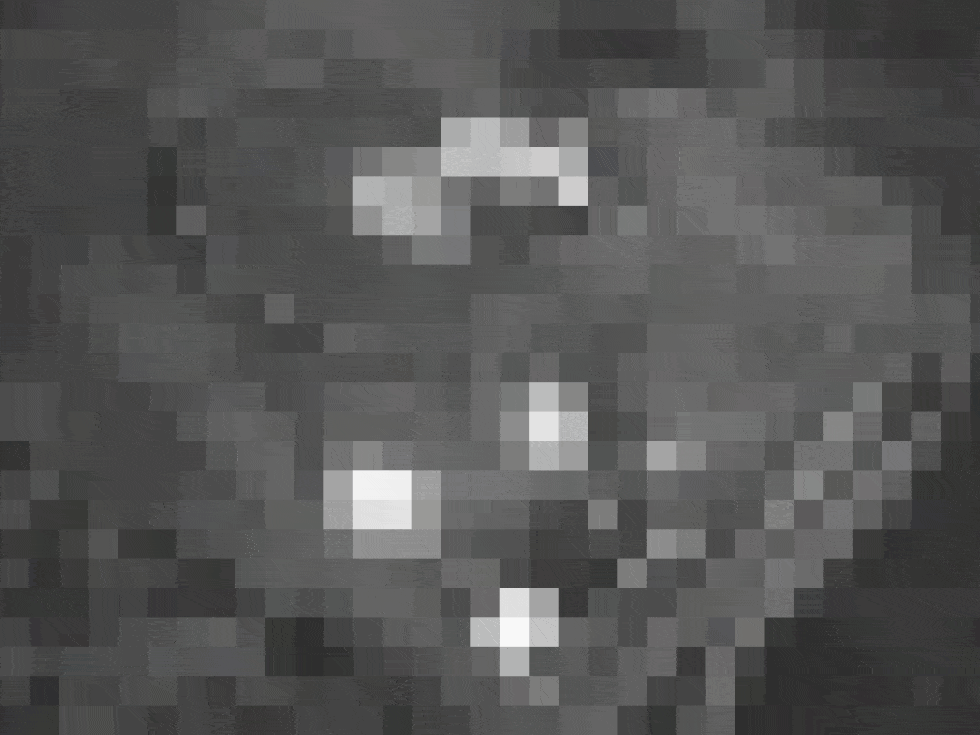- Within UFO subculture, there are influencers who make money from viewers.
- A recent “jellyfish UFO” embodies the way these videos are blurry and inscrutable.
- People have good intentions, and it’s human nature to fill in gaps in knowledge—especially when you want to believe.
In January, a well-known UFO influencer, Jeremy Corbell, shared footage of something the public has started calling the “jellyfish UFO.” The footage shows “a mysterious object that appears to have dangling tendrils, and which appears to smoothly float over the roofs of a military base in Iraq.” To people who already want to believe in UFO sightings, these kinds of images are just vague enough to show the viewer what they want to see.
Corbell says the footage is from 2018, but a U.S. Marine Corps officer confirmed to reporters that it was from 2017. Corbell’s version is a bootleg recording from someone’s device during some kind of military meeting. It doesn’t appear to have any real mass, any design that conforms to engineering or physics as we know them to exist in the universe, or any signs that an off-camera entity is flying or steering it.
This speculation doesn’t necessarily mean there are no aliens in the universe or any real UFOs that represent alien intelligence and travel. It just means people with fringe beliefs like to urge non-believers to “check out the evidence.” While I think that’s good advice in some situations, it’s increasingly complex to ask people to check out “evidence” that’s monetized per view, like Corbell’s YouTube-hosted video. It directly incentivizes conspiracy thinking that will draw in viewers and bait engagement through comments.
💡 Occam’s razor tells us that the simplest explanation is usually the best. You can apply this principle when looking at an unidentified object to make sure you’re using scientific reasoning in your thought process.
The Information Bottleneck
Mick West is a debunker and investigator of UFO claims like those made by Corbell. He urges people who believe in eyewitness accounts to continue asking for better, more complete evidence. “They all seem to be legitimate videos, in that they were taken by someone in the armed forces, not in the course of their work, but whilst they were in the room. They record a monitor with their phone and send that to Jeremy,” West tells Popular Mechanics. “It’s just the interpretation that’s up for dispute.”
“The ‘Jellyfish’ object seems to be moving quite slowly and in a straight line in the same direction as the wind,” West continues. “So I think it’s probably something lighter than air, like some helium party balloons of various shapes. 3D analysis shows it might be around 1,000 feet up, which explains why nobody could see it at night.”
When people send materials directly to well-known and influential content creators like Corbell, they participate in an information bottleneck, West explains. Corbell has a built-in audience of believers that’s ready to spread content on his behalf and argue with skeptics like West on social media. But West says he wishes more people who surreptitiously record footage like this would share it directly with the public.
“You may as well just release it to the public, because that’s the best way of figuring out what it is,” West says. “People have promoted this amazing footage coming out, and it gets released to the public, thousands of people look, and someone figures out what it is. The problem is with sending it to one individual. They might be missing some useful bit of information.” West cites the example of a green triangle UFO from 2021. “That got referenced later in a congressional hearing as an example of something they’d figured out [was not a UFO],” West says. “When it initially showed up, they didn’t know what they were looking at—the camera was a bit out of focus.”
When Seeing Should Not Be Believing
UFOs fall into the center of a Venn diagram of the natural instincts of the human mind. Our brains reward novelty. They encourage seeing patterns where there may not be any, known as patternicity or apophenia, because identifying real patterns helps humans survive. And since UFO sightings are framed as secretive and one-time-only flukes, they’re subject to the same replication crisis that affects a number of fields. There are never clear videos, sufficient data points, multiple points of view, or anything else that would help scientists triangulate a real sighting.
The jellyfish was observed by a floating camera balloon called an aerostat. These look like blimps, or much larger versions of a classic “bomb” shape. Just for fun, I took an image of an aerostat in Puerto Rico and processed it a bit to imitate low-quality video footage. Then, I blurred it some more. As the image resolves, it almost looks like the U.S.S. Enterprise from Star Trek. But it’s just the same aerostat on a military base.
I’m not an expert on aircraft, but I am an enthusiast of the many ways our brains mislead us into flawed thinking or cognitive biases. And when it comes to UFOs, they also fit into the classic qualities of conspiracy theories in general, like secrecy that has no point: If the government knew there were spacecraft representing whole new paradigms in the physics of flight, why wouldn’t they study them publicly? Right now, even military contractors are often working in the public eye. Westinghouse and other energy companies are open about experimental nuclear reactor concepts, including ones for the military to carry around in the back of vehicles. That would be a major paradigm shift in the industry, and it’s being acknowledged in the open. And our body of patent law would ensure that whoever first made it to market with alien flight technology would have exclusive access for a period of years. That includes the U.S. government, itself, if applicable.
The Bottom Line
Despite the missing pieces, people record these videos in good faith, and their curiosity and belief are often sincere, West says. “A lot of people want to believe. It’s the X Files thing. It’s a lot more entertaining and interesting and validating than the plain old boring mechanical universe with just us in it,” he muses. And personal experiences are behind many people’s beliefs, even though we also know humans are infamously unreliable witnesses.
“A lot of UFO people had some experience they saw one time, and other interpretations [are] colored by that initial experience,” West says. “They want to validate what they saw that one time. If they see a video or hear someone else’s account, it’s more preferable for that to be aliens than to be something boring. If you look into ufology, a lot of the people—even the well known famous people you see on TV—have had some kind of personal experience.”
This can lead to a kind of shared cold reading motivated by people’s genuinely good intentions, the same way eyewitness accounts can merge into each other when witnesses have a chance to compare stories. Sometimes we’re not even aware of it, and our eyewitness suggestibility can hew to our existing biases.
There’s nothing wrong with recognizing that the human brain has flaws. We aren’t computers, and even computers have flaws of their own. In fact, admitting it gives us a huge strategic advantage, because we can design observations and experiments that counteract our natural fallacies. If real UFOs are out there, eventually we’ll have to see them in clear light, in detail, and with features that can be examined and studied.

Caroline Delbert is a writer, avid reader, and contributing editor at Pop Mech. She's also an enthusiast of just about everything. Her favorite topics include nuclear energy, cosmology, math of everyday things, and the philosophy of it all.














